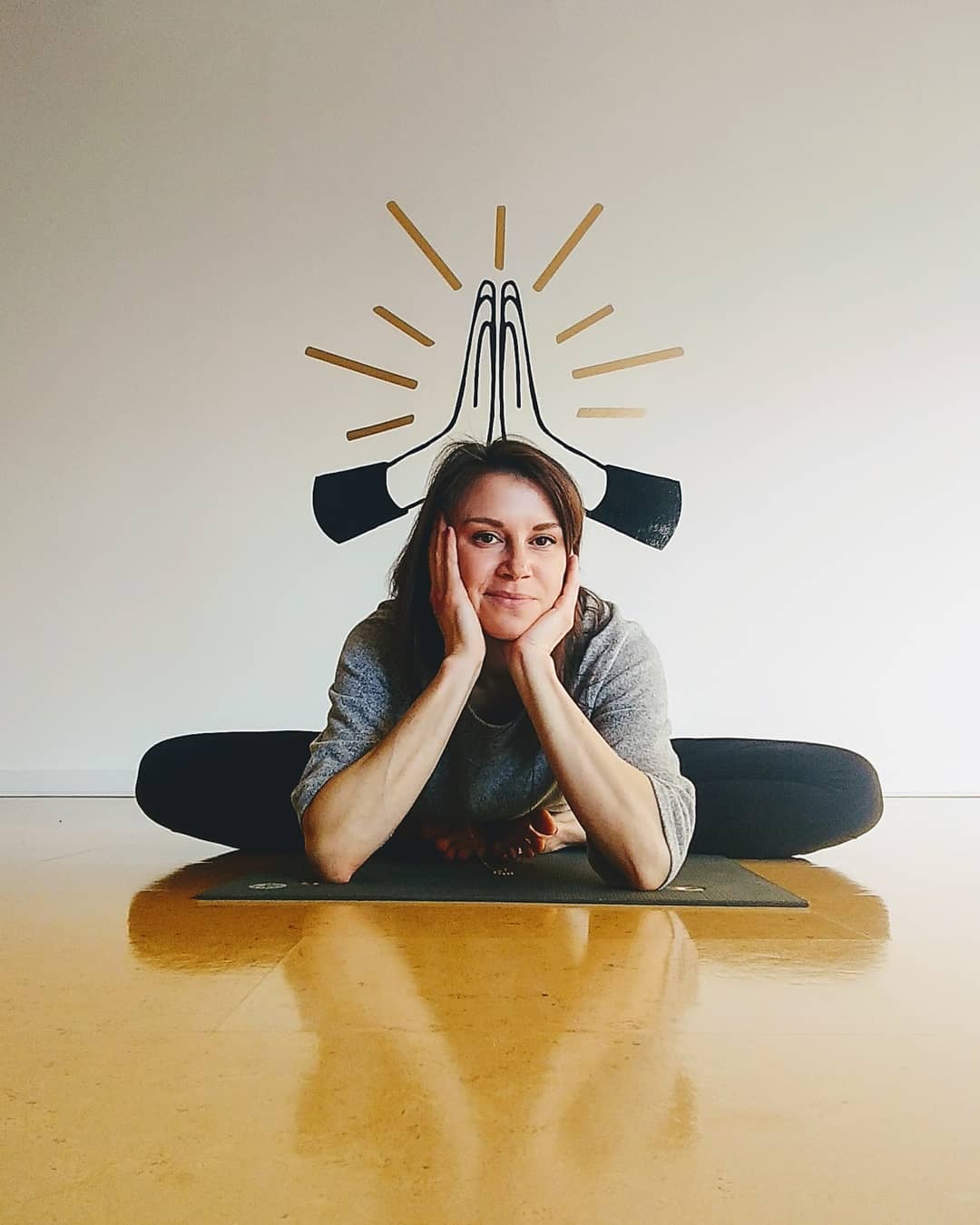
Some of the best advice I’ve received as a yoga teacher I’ve found handy in my day to day existence.
I wanted to share 4 of these insights today. Oddly enough, these words of advice have become handy outside the context of teaching yoga. Further proof that yoga is meant to be lived both on and off the mat. Go figure…;)
1) Don’t post unless you have something to say
This little nugget of wisdom is about social media. By nature I am more introverted. In light of this, when I began teaching and observed how some teachers used social media as a part of their business practice, the introvert in me started to die a little. I’ve never really loved social media. To this day, every time I post a picture of myself doing a yoga posture, I resist the urge to throw up in my mouth just a little bit. It’s hard to put yourself out there on the best of days, never mind if your natural inclination is to curl up on the couch with a book, go for long walks without a cell phone in tow, or journal for hours your personal thoughts and issues – not for anyone else, just for yourself. The idea of social media seemed like an assault.
But when I saw how it helped me reach out to students, when I realized it let people know what I was up to, where I was teaching, where they could find me, I decided to concede….if only just a little bit. I approached a teacher who I highly respected. I found her voice on social media refreshing. No overshares, no pictures of her breakfast, no hyper usage of Rumi quotes. I told her about my internal conflict towards Facebook and Instagram and asked her how she handled it. Her answer was straightforward and simple,
“I don’t post unless I have something to say”
Boom. Mic drop. To this day I try to follow this advice. There is enough noise online, I try not to add to it unnecessarily. Each time I post, I check to see if it’s worth saying. I ask myself is it something I believe in, something I have sat with long enough I know it to be true. Some days are easier than others, but all the same, it’s what I strive for.
2) Teach from where you are
This piece of wisdom relates to emotions.
As a yoga teacher and a human person I have good days and bad days. Some days, the last thing I want to do is get up in front of a room full of people and talk about inner peace and deep breathing when in reality, all I want to do is punch the crap out of inanimate objects or scream at the top of my lungs out of sheer frustration. So how do I teach on a “rip my hair out” kind of day?
It only makes matters worse if you try and force yourself into a state of rainbows and unicorns. However, just because you’re in a bad mood does NOT give you the right to spread it to others, especially not your students.
Even so, people can tell if you’re faking it. They can tell when you’re pretending to be happy or pseudo joyful. If you’re not feeling like a ray of sunshine, allow yourself to feel like a rain cloud. Contain the rain inside your own person, and shift into neutral so that you can offer a practice that serves your students.
A wise teacher once told me “the best teachers are the ones who can own their energy”. We are large enough and strong enough to feel anger and frustration, but at the same time, breathe through it, set it aside, deal with it later, all the while offering love and care towards others. In essence – get over yourself, but don’t discount your feelings. This is a balancing act we must enter into daily as teachers and as humans.
3) Try not to overdo it.
Oh Lordy, this is a hard one. I love to challenge myself. I love to work. I love to see just how much I can do until I fall to my knees in a state of exhaustion. Even so, I’ve learned to ask myself,
“Is this helpful?”
Is running myself ragged, teaching a million classes a week, working out seven times a week really helping me? Ultimately is it helping others? The short and truthful answer?
NO.
The longer I live the more I recognize the deep truth of the phrase,“Everything in Moderation”. This includes teaching yoga. If we teach too much we lose energy and the capability to offer classes of substance. If we are feeling run down and used, our classes will start to manifest this. It’s better to offer quality rather than quantity when it comes to teaching. Economically speaking, this isn’t always easy, but over time, as teachers we learn what our magic number is.
How many classes a day can I teach?
How many clients a week can I see?
How many workshops and retreats a year can I lead without going overboard?
Everyone’s capacity is different. This capacity expands and contracts over time. I have consistently learned that less really is more – even when teaching what you love.
4) Keep lifting weights
This piece of advice I gave to myself. I love lifting weights (I even wrote about it here a while back).
Keeping up a practice of lifting weights has allowed me to create a sustainable, stronger, deeper physical yoga practice. Flexibility needs strength. With this in mind, to this day I pick up weights 2 to 3 times a week. And it feels so damn good!
I’m hyper mobile. Because of this, I try to do exercises that build strength around the joints and ligaments. If you are a super bendy yogi, I suggest you consider doing the same. Your knees, shoulders and hips will thank you (especially when you’re in your 70s).
Everybody’s path in yoga and in life is different. We all have pieces of wisdom that we carry with us daily. Don’t discount what you learn on your own personal path. I’ve found it helpful to write these pieces of advice down so I can revisit them and see how they have lead me and changed me. I hope this advice helps you as much as it has helped me! Be sure to share your own words of wisdom. Each of us has lessons we have learned that are worth sharing. We’re all in this craziness together
– so let’s help each other along 🙂
